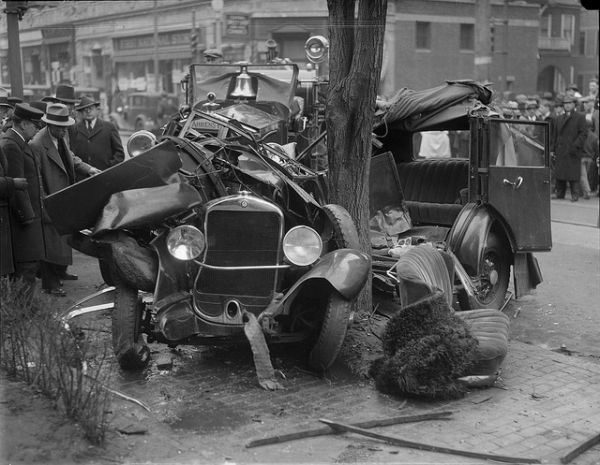Why Cars Will Kill 30,000 Americans This Year
Car
wrecks are the number one cause of death for Americans under 35. Every
year, thousands of people die due to the traffic on America’s highways.
But we’ve become used to the statistics, because they seem inevitable.
After all, we use our cars so much, accidents just come with the
territory. But it wasn’t always that way. Peter Norton, the author of
Fighting Traffic: The Dawn of the Motor Age in the American City,
tells us that a hundred years ago, when automobiles started to stake
their territory on roads full of pedestrians and horses, they were seen
as dangerous machines, operated by “vampire drivers” and death drivers.”
By
the end of the 1920s, more than 200,000 Americans had been killed by
automobiles. Most of these fatalities were pedestrians in cities, and
the majority of these were children. “If a kid is hit in a street in
2014, I think our first reaction would be to ask, ‘What parent is so
neglectful that they let their child play in the street?,’” says Norton.
“In
1914, it was pretty much the opposite. It was more like, ‘What evil
bastard would drive their speeding car where a kid might be playing?’
That tells us how much our outlook on the public street has
changed—blaming the driver was really automatic then. It didn’t help if
they said something like, ‘The kid darted out into the street!,’ because
the answer would’ve been, ‘That’s what kids do. By choosing to operate
this dangerous machine, it’s your job to watch out for others.’ It would
be like if you drove a motorcycle in a hallway today and hit
somebody—you couldn’t say, ‘Oh, well, they just jumped out in front of
me,’ because the response would be that you shouldn’t operate a
motorcycle in a hallway.”
So what changed? Traffic
was regulated by laws and by infrastructure, but the forces behind the
system were careful not to demonize cars. After all, the auto industry,
the fuel business, and the travel industry had a lot of money riding on
the success of private passenger cars. These financial concerns changed
our cities and highways to shape the attitudes we have about automobiles
and traffic fatalities we have today. There was a lot involved in this
transformation over the years,
which you can read about at Collectors Weekly.


No comments:
Post a Comment